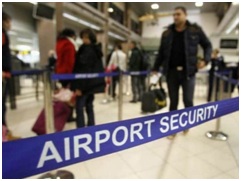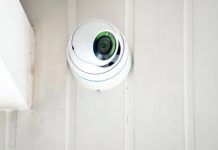The airport security market is predicted to grow at 7% CAGR from 2017 to 2024. According to a new research report by the market research and strategy consulting firm, Global Market Insights, Inc, the worldwide Airport Security Market is predicted to be worth over $16bn by 2024. High penetration of these solutions is due to the demand for advanced security systems such as biometrics in identity and access monitoring, contactless entryway checkpoints, x-ray scanners, and thermal cameras. Conventional security measures employ invasive procedures and protocols such as physical checks and body pat-downs which are highly uncomfortable. To boost passenger convenience, airport security market vendors are investing in R&D activities for the development of technologies such as x-ray scanners. In high-risk settings, preventive measures are required over reactive technologies. In such cases, it is essential to track and forecast security threats in contrast to taking measures to fix the issues after their occurrence.
The rising penetration of smart technologies and IoT in airports is fueling the demand for the airport security market. These include technologies such as remote check-ins, sensor equipment, e-gates, RFID baggage reconciliation systems, etc. A major portion of the data is collected in real-time and stored in large central databases. The presence of security issues in such cases can leave the data vulnerable to attacks from internal and external parties. Wireless tracking technologies, for instance, can allow a hacker to utilise triangulation algorithms or Received Signal Strength Indication (RSSI) Information to track the location of the Wifi endpoint user and unearth historical data such as the route taken by the users, purchasing data, etc.
A major factor contributing to the high growth of the airport security market is the increase in the traveller populations, primarily in the Middle East and Asia Pacific. Large scale globalisation and rapid industrialisation is driving the movement of goods and people across country borders. Owing to this, airports in urban locations are increasingly experiencing high passenger traffic causing governments of varying economies to undertake massive projects for the upgrade of existing technologies and the development of new airports. In the aftermath of the 9/11 attacks, the U.S government has increased the stringency of security procedures in and around the aircraft and passenger areas.
The airport surveillance systems market is anticipated to exhibit substantial growth during the forecast time-period. These systems are required to be functional at all times and sense multiple movements occurring at varying ranges. Additionally, these systems are supposed to function effectively in intense environmental conditions such as fog and storms and capture images in reduced visibility settings. The advent of 4K cameras and video units has revolutionised the airport security market owing to their sharper and improved image quality and ability to provide coverage for a wider area








